We’ve been in the marketing game for over a decade, and we’ve seen it all: the trends that come and go, the startups meant to be the next big thing, and a couple of economic downturns. But one thing has stayed the same: the best way to get real results that you can measure—and brag about—is to approach marketing with a clear strategy and a deep understanding of your market and audience. How do we know? Because we’ve helped our clients win in big ways with this philosophy, no matter their industry or challenge. But we don’t gatekeep successful strategies for our clients only. We want to see more good marketing in the world, so today we’re breaking down some of our best content marketing case studies, sharing our approach, and offering helpful takeaways you can use to win too.
5 Content Marketing Case Studies You Can Learn From
How do you navigate problem-solving? Market competition? Stagnancy? Here’s how we helped five brands face their challenges head-on—and get great results.
Case Study 1: Bloomreach’s Paid Media Strategy Beats Goals by 30%
The challenge: Bloomreach is a platform that personalizes the e-commerce experience. To scale, they needed to grow both brand awareness and brand equity among new audiences, so they approached us to create their first-ever brand campaign around a single idea: “Be Limitless.”
What we did: To start, we built out a multi-channel paid media strategy to engage the right audiences on the right platforms. Our goal was to deliver the “Be Limitless” messaging across as many channels as possible while maximizing spend and increasing ROI.
To do this, we focused on specificity. By using geofencing, historical data, and targeted job titles to segment the exact audiences Bloomreach wanted to reach, we could concentrate our efforts and tailor our approach to each channel/audience.
We partnered with specialized vendors to deploy the campaign across a multi-channel buy, including digital channels, connected TV, programmatic channels, podcasts, and more. But we didn’t set it and forget it (a common mistake we see marketers make). To maximize spend, we used a test-and-learn approach, continuously testing and iterating campaign content to improve results in real-time.
With this approach, the campaign was a measurable success.
- 10% of target account list moved from ‘unaware’ to ‘aware’
- 13 million impressions (beating campaign goal)
- $10 average CPM
- 429,000 completed audio listens at an average cost of $0.03 (vs. national average $.02 – $.05)
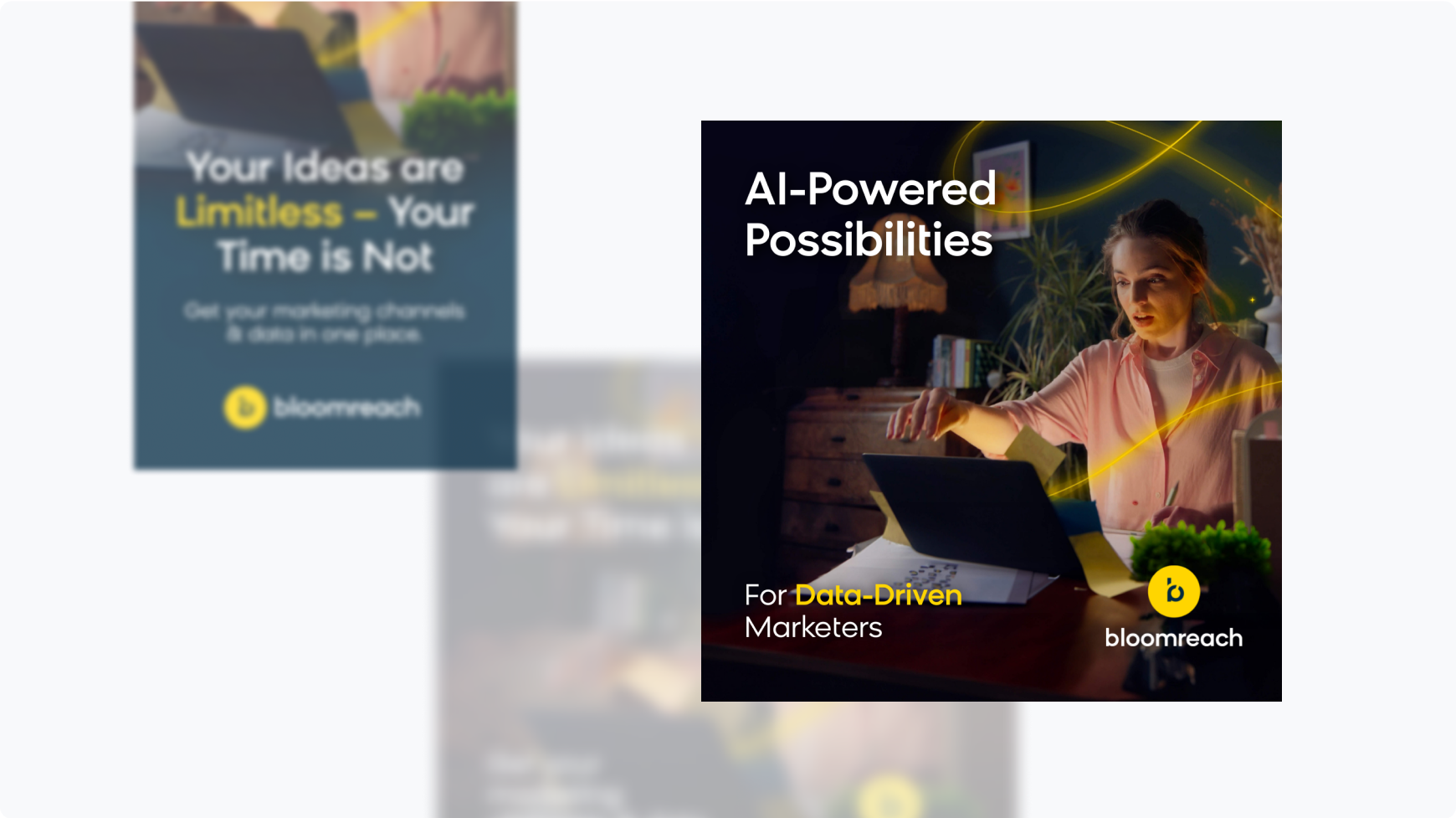
The takeaway: If you want to connect with your audience, segmentation is key. (See our guide to identifying your audience if you’re not exactly sure who your audience is or what they want.) Once you have a clear understanding of their drivers, you can identify the best distribution channels and test messaging
Case Study 2: VideoAmp’s Site Rebrand Increases MQLs 850% in One Month
The challenge: VideoAmp is a software and data startup. After raising Series C funding, they needed to position their brand for growth. However, their site did not tell a compelling brand story to engage visitors.
What we did: To change the narrative, we created a UX-optimized website to communicate their refreshed brand story and make their brand stand out in a competitive market.
However, before we drafted any website wireframes, we needed to dive into the core of their story, so we revisited VideoAmp’s brand strategy to clarify goals, understand their brand heart, and craft fresh messaging.
To bring the brand to life on the site, we crafted a clean and sophisticated aesthetic with a black-and-white color palette punctuated by intentional uses of color. We also incorporated animated visualizations to add movement and excitement, emphasizing VideoAmp’s focus on data-based solutions.
With a streamlined story brought to life through a cohesive visual identity, VideoAmp made it easier for site visitors to understand what the brand does and why it’s different. Once launched, it was clear the fresh website delivered the desired results, helping VideoAmp garner:
- 850% monthly MQL increase (goal was 200%)
- $1.4 billion funding (raised since the web relaunch)
- 2 awards (Awwwards Honorable Mention and a Mobile Design Excellence Award)
Although most people consider a website redesign to be a purely aesthetic endeavor, VideoAmp’s case study showcases the importance of distilling a brand story and bringing it to life through every tool: words, design, and UX.
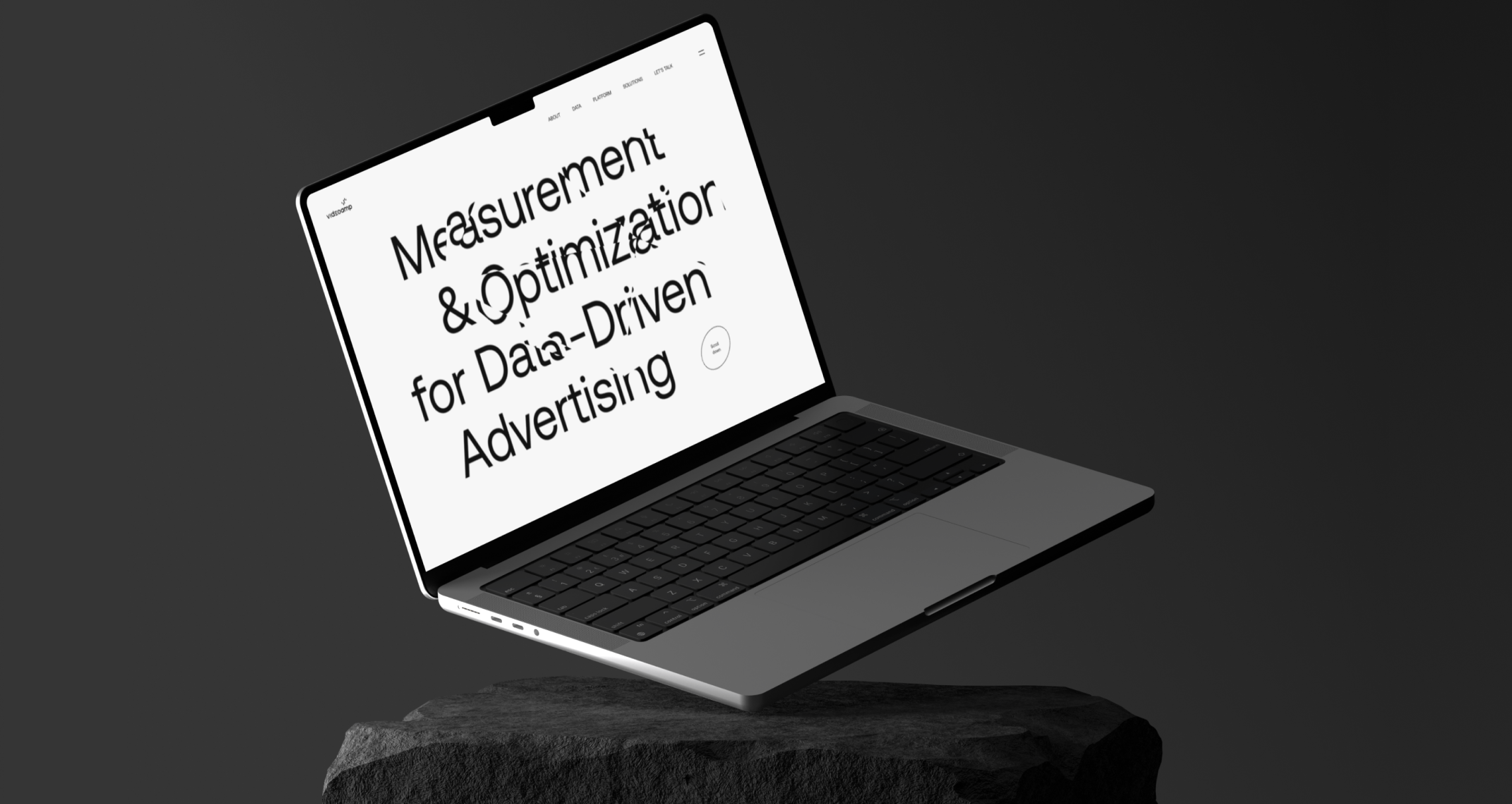
The takeaway: Your brand heart is the foundation of your entire brand story, so it’s crucial to have clarity and alignment about who you are and what you do. See our guide to find your brand heart (including purpose, vision, mission, and values), then look for ways to turn your heart into content that communicates your core story.
Case Study 3: Dropbox’s Talent Campaign Increases Market Perception by 7%
The challenge: Dropbox is a reliable, private, and secure file-storing service that lets millions of people store their most important content. They are constantly creating new and exciting products to expand the brand, but they need an ever-growing team of employees to help them scale. Unfortunately, in the competitive tech landscape, attracting top talent is harder and harder.
What we did: If you want to attract the best and brightest in your field, you need to tell the story of your employer brand: What are the benefits of working for you? What is your culture like? Why is working for you different than working for your competitor? To uncover this information about Dropbox, we embarked on an extensive research journey to understand employer brand perception from both inside and outside the company. This included an audit of their current perception, as well as surveys of current and even former employees to understand what differentiated the brand (according to the people who work there).
This helped us uncover a key narrative: “We believe the world can work better.” With this foundational idea, we built out five key messaging pillars to build content around. Through multiple channels, we deployed a campaign to highlight Dropbox’s mission-driven culture of autonomy, flexibility, and diversity.
This revamped employer brand story proved to be a massive success, helping Dropbox plant its flag as one of the best brands to work for, as demonstrated by:
- 7% increase in market perception
- Named #1 Best Place to Work Remote (according to CBS News)
- 4.5 Glassdoor rating (up from 3.7)
- 2:32 min Average Session Duration on the jobs site
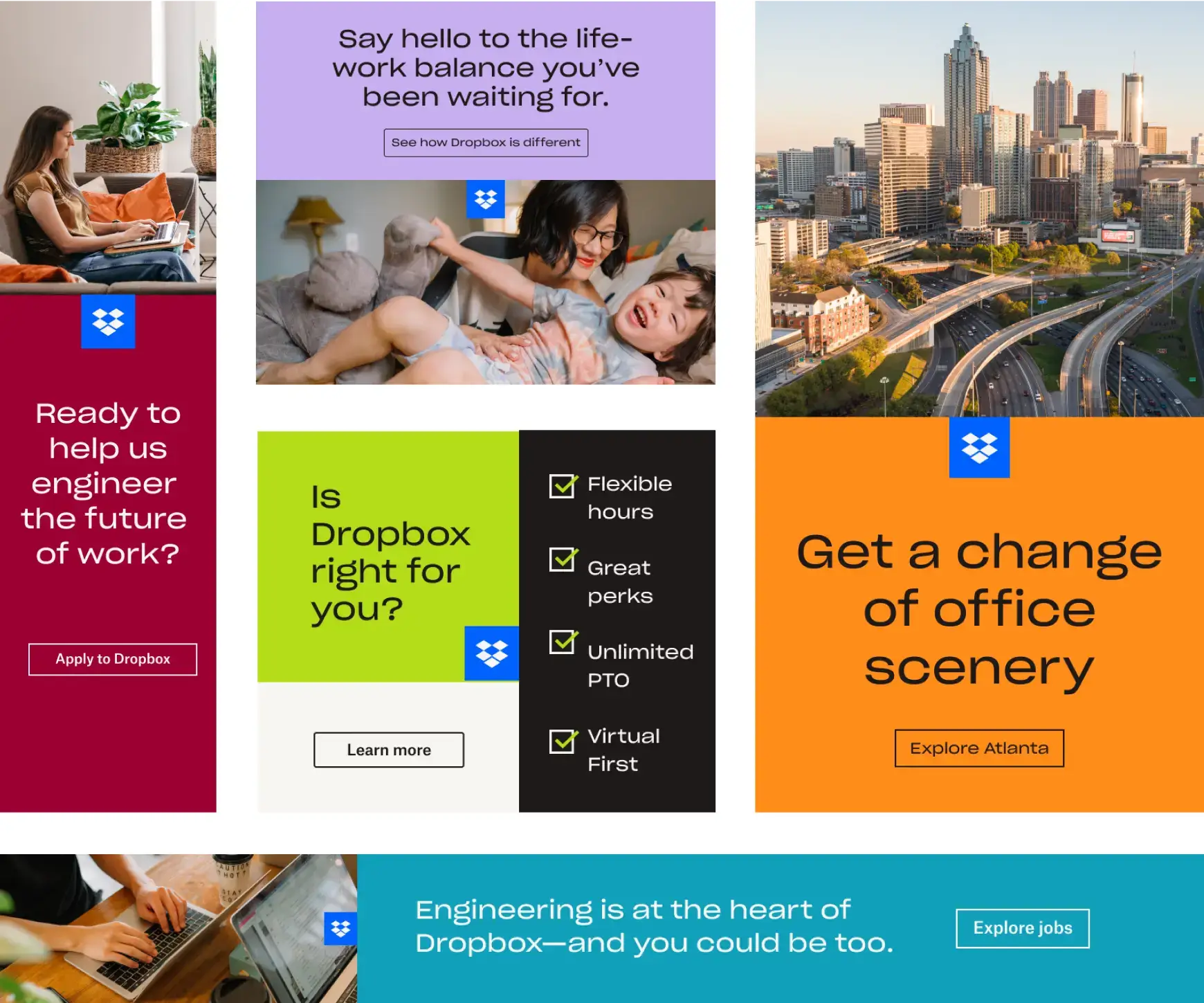
The takeaway: Understanding and leveraging your unique strengths and values is the secret to attracting the right people. But to effectively articulate this, you need to build out a strong Employer Value Proposition. See our guides to distill your EVP and translate it into unique content across channels. (For more details about this particular case study, find out what you can learn from Dropbox’s campaign.)
Case Study 4: Teach For America’s Paid Media Campaign Surpasses Goals by 124%
The challenge: Teach for America is an organization that finds outstanding leaders to teach in low-income schools, but they have struggled to recruit more teachers—falling short of their goals for seven years. To turn things around, they asked us to help enhance their paid media outreach strategy.
What we did: TFA had a sizeable budget of $1.2 million. But in any paid media strategy, it’s not about the budget; it’s about optimizing that budget to reach the right people.
We started with a research phase to review previous campaign results, audience analysis based on past performance, media vendor information, and TFA historical application data. This information helped us make more informed decisions about budget allocation and—most importantly—influenced an aggressive test-and-learn campaign.
Like TFA, we know the value of education, so we ran tailored experiments to test, learn, and revise campaigns based on insights. By continuously testing and reallocating resources to the most effective channels, we maximized ROI and gained valuable insights for future campaigns, ultimately outperforming their recruiting goals by 124%.
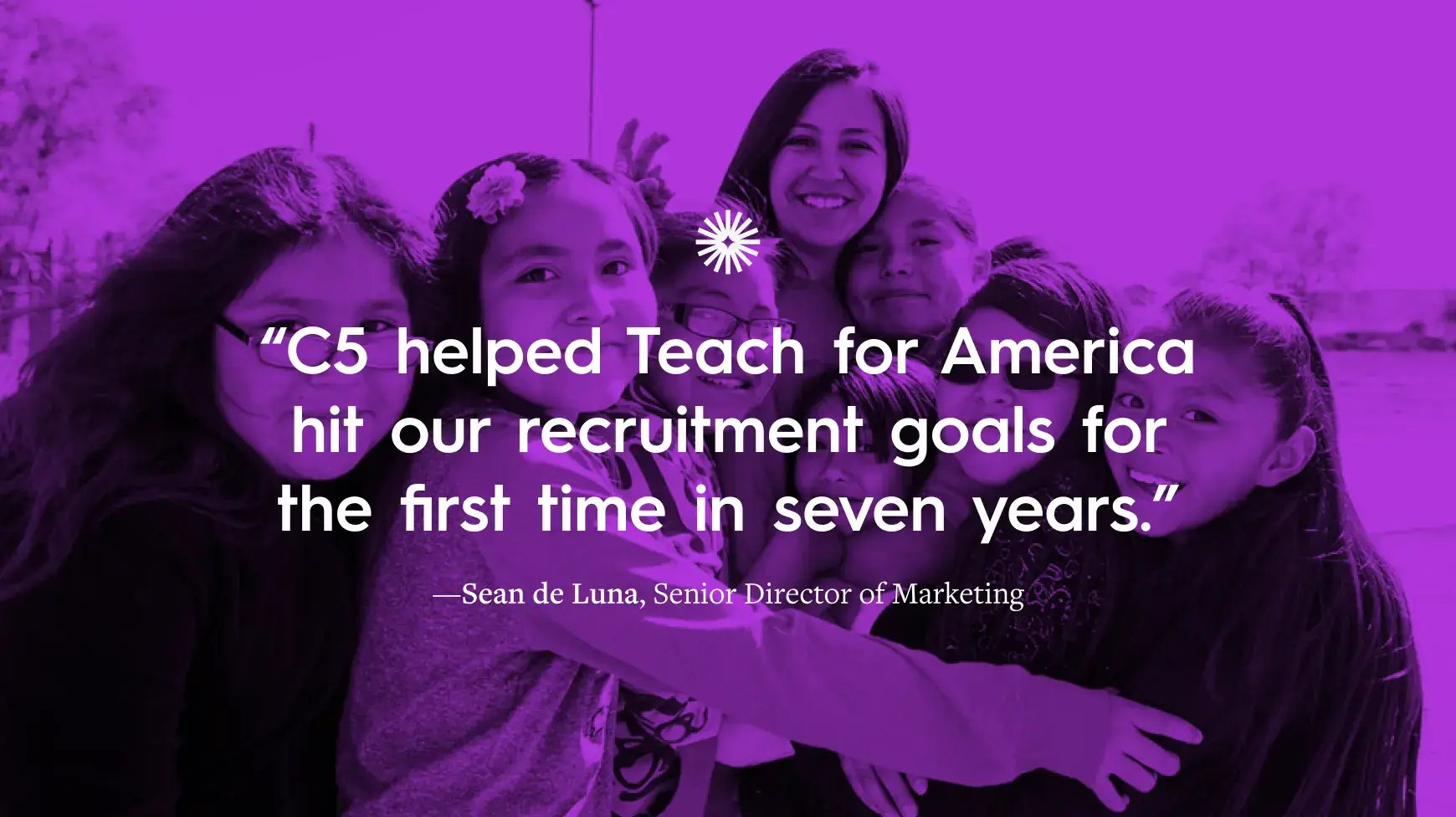
The takeaway: If you want to win, you need to adopt a data-driven and flexible approach. Set up short-term experiments to gather data, A/B test, and continue to iterate. AI tools can be a huge benefit here, as they can help you A/B test messaging to optimize your impact, build lookalike audiences, and more. If you haven’t experimented with AI, start with our ultimate guide to AI and download 75 free prompts to build an AI-driven content strategy.
Case Study 5: Course Hero Becomes an Industry Expert by Creating 600 Infographics
The challenge: Course Hero is an online learning platform that helps students access course-specific study resources contributed by a community of students and educators. To establish themselves as a trusted resource for students, they wanted to create a series of infographic study guides that distilled popular novels into single infographics. The problem? They wanted to create hundreds of them.
What we did: All content takes effort to produce, but visual content at that scale can be a tremendous lift. Fortunately, having actually written a book on infographics, we knew how to scale production without sacrificing quality.
To start, we developed a visual language and style guide to ensure quality and consistency for every infographic produced. We also established a core team and structured review process to maintain cadence, creating a well-oiled machine that would not be bogged down by unnecessary issues.
Ultimately, this approach allowed us to create 600 infographic study guides for famous novels over the course of three years, driving healthy traffic to Course Hero’s site and earning thousands of shares and followers on social media (including nearly 40,000 followers on Pinterest).
Best of all, by creating this epic library of study guides, Course Hero was able to follow through on their brand promise in a tangible way by helping support students in their educational journey.
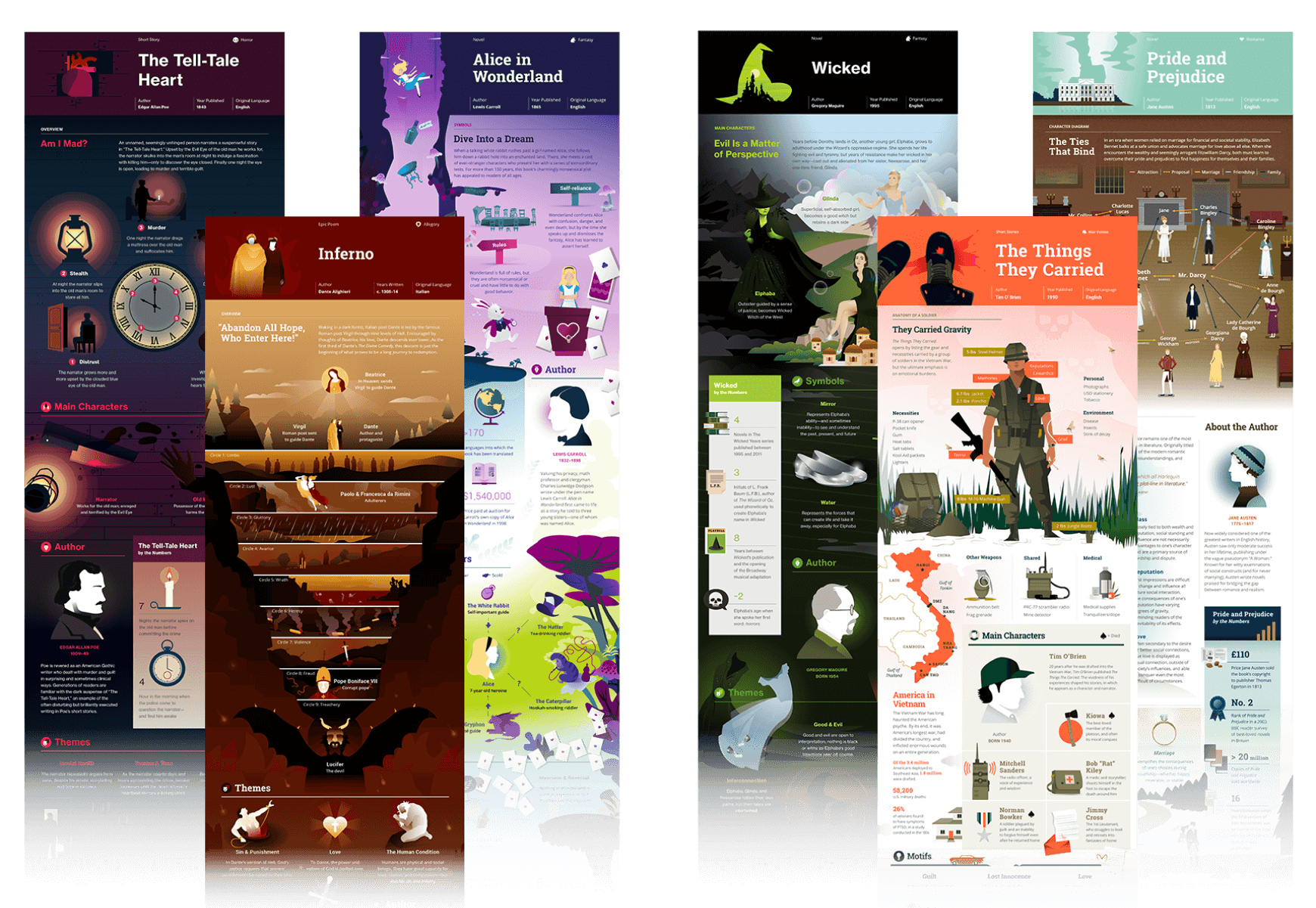
The takeaway: In content marketing, consistency is the key to creating a relationship with your audience. You need to show up for them regularly to become a trusted resource. To do this, you need an optimized production process that ensures you can create a steady volume of quality content. We’ve made or witnessed just about every mistake in content creation, so we know exactly what pitfalls to avoid. See our guide to master content creation for our best tips to work quickly and effectively,
How to Get Better Results from Your Own Content
We hope these takeaways have been helpful as you continue to pursue your content marketing efforts. Just remember: No matter how big your budget or team, you can only be truly successful with a measured, intentional approach.
- Start with your content strategy. You need a documented content strategy to guide your efforts. (We’re always surprised by how many brands do not have a documented strategy.) To make sure your goals and team are aligned, use our free content strategy toolkit.
- Stay flexible. No strategy is set in stone. Although it’s important to have a documented plan, that plan may change. Review your strategy quarterly (at least) and update as you gain more insights from test-and-learn campaigns.
- Use the right tools to work smarter. AI cannot replace marketers, but it can help you do your job more effectively. Learn about the many ways you can implement AI and explore the tools that may serve you.
That said, don’t get discouraged if you continue to hit roadblocks. As industries change and markets shift, sometimes you need a little extra support to navigate challenges. If you’re looking for a partner, use our tips to find an agency with the right expertise (or find out what it’s like to work with us). Whether you need help or not, remember that the most important trait you can cultivate is curiosity and a willingness to experiment. The more you try, the more you learn, and the more you’ll grow.




